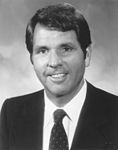
The 1986 United States Senate elections were elections for the United States Senate. Held on November 4, in the middle of Ronald Reagan's second presidential term, the 34 seats of Class 3 were contested in regular elections. The Republicans had to defend an unusually large number of freshman Senate incumbents who had been elected on President Ronald Reagan's coattails in 1980. Democrats won a net of eight seats, defeating seven freshman incumbents, picking up two Republican-held open seats, and regaining control of the Senate for the first time since January 1981. This remains the most recent midterm election cycle in which the sitting president's party suffered net losses while still flipping a Senate seat.

The 1980 United States Senate elections were held on November 4, coinciding with Ronald Reagan's victory in the presidential election. The 34 Senate seats of Class 3 were contested in regular elections. Reagan's large margin of victory over incumbent Jimmy Carter gave a huge boost to Republican Senate candidates, allowing them to flip 12 Democratic seats and win control of the chamber for the first time since the end of the 83rd Congress in January 1955.

The 2000 United States House of Representatives elections were held on November 7, 2000, to elect U.S. Representatives to serve in the 107th United States Congress. They coincided with the election of George W. Bush as President of the United States. The Republican Party won 221 seats, while the Democratic Party won 212 and independents won two.
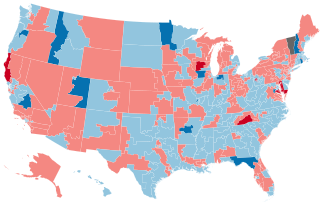
The 1990 United States House of Representatives elections was an election for the United States House of Representatives on November 6, 1990, to elect members to serve in the 102nd United States Congress. They occurred in the middle of President George H. W. Bush's term. As in most midterm elections, the President's Republican Party lost seats to the Democratic Party, slightly increasing the Democratic majority in the chamber. It was a rare instance, however, in which both major parties lost votes to third parties such as the Libertarian Party as well as independent candidates.

The 1972 United States House of Representatives elections were held on November 7, 1972, to elect U.S. Representatives to serve in the 93rd United States Congress. This was the first election held after the 1970 United States redistricting cycle. It coincided with the landslide reelection victory of President Richard M. Nixon. Nixon's Republican Party managed to gain a net of twelve House of Representatives seats from the Democratic Party, although the Democrats retained a majority.

Steven Douglas Symms is an American politician and lobbyist who served as a four-term congressman (1973–1981) and two-term U.S. Senator (1981–1993), representing Idaho. He is a partner at Parry, Romani, DeConcini & Symms, a lobbying firm in Washington, D.C.
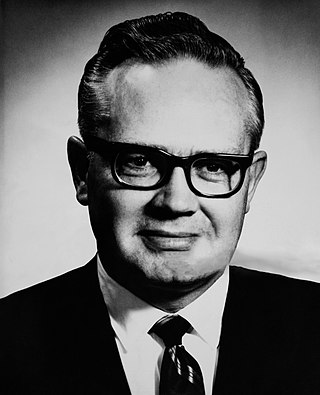
Orval Howard Hansen was an American politician who served as a congressman from Idaho. He served three terms as a Republican in the House from 1969 to 1975, representing the state's 2nd district.

The 2008 United States elections were held on Tuesday, November 4, 2008, during the war on terror and the onset of the Great Recession. It was considered a Democratic wave election, with Democratic Senator Barack Obama of Illinois defeating Senator John McCain of Arizona by a wide margin, and the Democrats bolstering their majorities in both chambers of Congress, thereby marking the first time since 1992 in which the Democrats won Congress and the presidency in one election.

The 1986 United States Senate election in Alabama took place on November 4, 1986 alongside other elections to the United States Senate in other states as well as elections to the United States House of Representatives and various state and local elections. Incumbent Republican Senator Jeremiah Denton lost re-election to Democrat Richard Shelby by 6,823 votes.
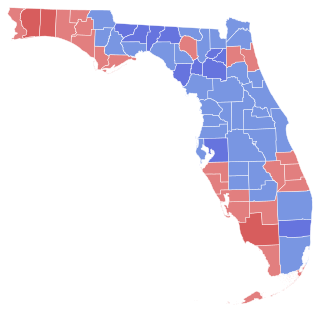
The 1986 United States Senate election in Florida took place on November 4, 1986 alongside other elections to the United States Senate in other states as well as elections to the United States House of Representatives and various state and local elections. Incumbent Republican U.S. Senator Paula Hawkins decided to run for re-election to second term, but was defeated by Democrat Bob Graham, the popular incumbent Governor of Florida. To date, this was the last time an incumbent from Florida's Class 3 Senate seat lost re-election.

The 1980 United States Senate election in Washington was held on November 4, 1980. Longtime incumbent Democratic U.S. Senator Warren Magnuson, the Senate President pro tempore, ran for a seventh term in office but lost re-election to Republican State Attorney General Slade Gorton. Magnuson was the most senior U.S. senator to lose re-election until Ted Stevens' defeat in 2008. Gorton was one of the dozen Republicans who beat Democrats to seize control of the Senate fueled by Ronald Reagan's landslide victory. This was the only time since 1926 that Republicans won Washington's Class 3 Senate seat.

The 1890–91 United States Senate elections were held on various dates in various states. As these U.S. Senate elections were prior to the ratification of the Seventeenth Amendment in 1913, senators were chosen by state legislatures. Senators were elected over a wide range of time throughout 1890 and 1891, and a seat may have been filled months late or remained vacant due to legislative deadlock. In these elections, terms were up for the senators in Class 3.

The 1992 United States Senate election in Idaho took place on November 3, 1992, alongside other elections to the United States Senate in other states as well as elections to the United States House of Representatives and various state and local elections. Incumbent Republican U.S. Senator Steve Symms decided to retire instead of seeking a third term. Republican nominee and Boise mayor Dirk Kempthorne won the open seat, defeating Democratic Congressman Richard H. Stallings.
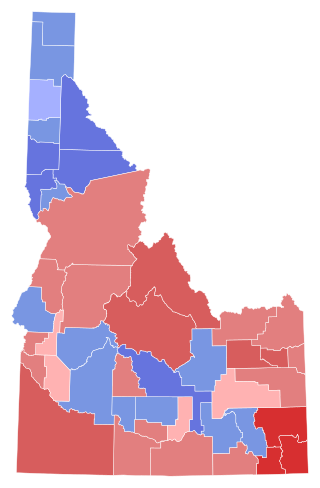
The 1980 United States Senate election in Idaho took place on November 4, 1980 alongside other elections to the United States Senate in other states as well as elections to the United States House of Representatives and various state and local elections. Incumbent Democrat Frank Church ran for a fifth term and narrowly lost to Republican Steve Symms. Ever since Symms took office in 1981, Republicans have held both of Idaho's U.S. Senate seats, as they had done so previously from 1951 to 1957.

The 2014 United States Senate election in Idaho was held on November 4, 2014 to elect a member of the United States Senate to represent the State of Idaho, concurrently with the election of the Governor of Idaho, other elections to the United States Senate, elections to the United States House of Representatives, and various state and local elections.

A general election was held in the U.S. state of Idaho on November 4, 2014. All of Idaho's executive officers are up for election as well as a United States Senate seat, and both of Idaho's two seats in the United States House of Representatives. Primary elections was held on May 20, 2014.

The 2016 United States Senate election in Idaho was held November 8, 2016, to elect a member of the United States Senate to represent the State of Idaho, concurrently with the 2016 U.S. presidential election, as well as other elections to the United States Senate in other states and elections to the United States House of Representatives and various state and local elections. The primaries were held May 17.

The 1972 United States Senate election in Idaho took place on November 7, 1972. Incumbent Republican Senator Leonard B. Jordan did not run for re-election. Republican U.S. Representative James A. McClure was elected to succeed him over Democrat Bud Davis.

The 1974 United States Senate election in Idaho took place on Tuesday, November 5. Democratic incumbent Frank Church was re-elected to a fourth term in office, defeating Republican Bob Smith.

The 2022 Idaho State Senate elections took place on November 8, 2022. Primary elections were held on May 17, 2022. Idaho voters elected state senators in all 35 seats of the Senate, electing one state senator and two state representatives in each of the 35 Idaho state legislative districts. State senators serve two-year terms in the Idaho Senate.


